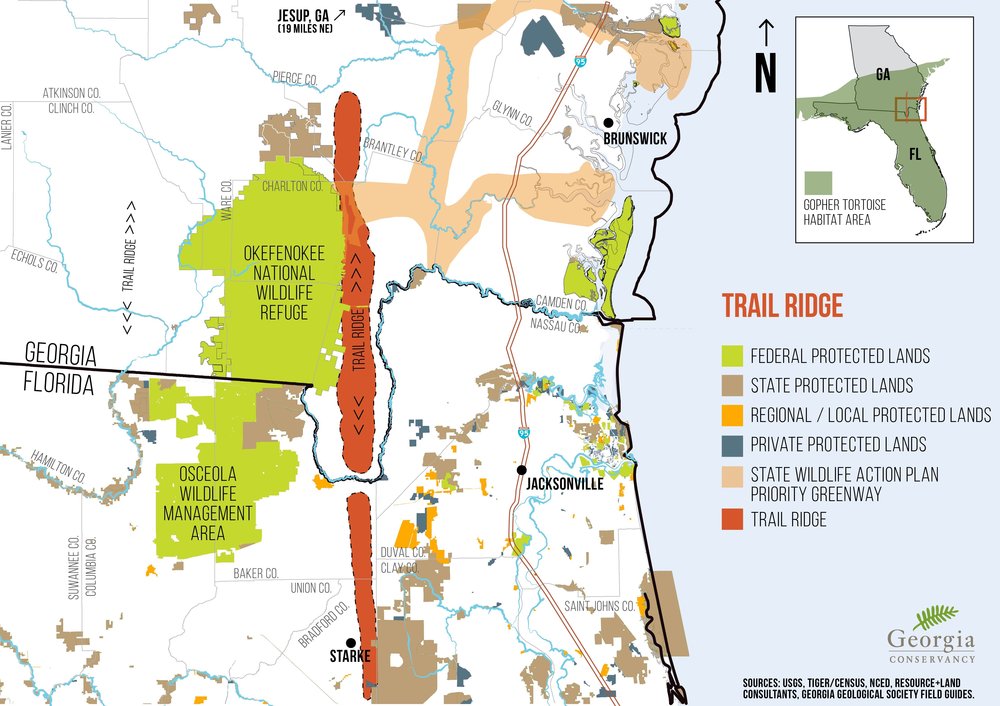FOR IMMEDIATE RELEASE
Hahira, Georgia, March 16, 2020 —
The coalition of supporters of the Okefenokee Swamp against anything that would harm it stands ready to stop the new strip mine application, same as the old one.
Twin Pines Minerals (TPM) of Birmingham, Alabama, in its new application
claims its proposed titanium strip mine
less than three miles from the Okefenokee Swamp
would be on a “reduced mining area,”
which is actually 86% of what they proposed last time.
They say they want to do a “demonstration” mine.
![[Figure 1: Location of the Proposed Saunders Demonstration Mine]](https://www.wwals.net/pictures/2020-03-13--tpm-re-application-public-notice-usace/tpm-public-notice-0006.jpg)
Figure 1: Location of the Proposed Saunders Demonstration Mine
PDF
Suwannee Riverkeeper John S. Quarterman says,
“Let their foot in the door and it will be even harder to get rid of them later.
TPM is under a Florida Consent Order along with Chemours for violations
at four mines due south in north Florida.
Chemours now wants a fifth Florida titanium mine on Trail Ridge.
Why would we think TPM would stop with just a nibble of Trail Ridge in Georgia?
Our Okefenokee Swamp with its fishing, boating, birding, and hunting nearby,
is much more important than any mine,
especially since it is the headwaters of the Suwannee River and the St Marys River.”
Despite TPM’s assurances, the miners have not proven their mining would not
affect the groundwater, the underlying Floridan Aquifer, surface streams,
or the Okefenokee Swamp.
Their application form proposes to mine 1041.7 acres, the same size tract
as in their application of last year that they retracted in early January of this year.
But their actual application says “TPM now wishes to conduct a demonstration mining project for a reduced mining area of approximately 898 acres.”
86% of the original acreage is not much reduced. And how is that just a demonstration?
No doubt you will hear more about that and other problems with the miners’ application from
the coalition supporting the Swamp and opposing anything that would harm it.
That coalition includes a wide range of organizations, Continue reading →

![[WKFL logos]](https://www.wwals.net/pictures/2020-04-10--wfkl-usace-tpm/Twin-Pines-Letter-to-EPA-4.10.20-0002.jpg)
![[Tifton to the Gulf]](https://www.wwals.net/pictures/2020-03-03--cleaner-wq/map-suwannee-gulf.jpg)
![[Figure 1: Location of the Proposed Saunders Demonstration Mine]](https://www.wwals.net/pictures/2020-03-13--tpm-re-application-public-notice-usace/tpm-public-notice-0006.jpg)

![[U.S. Rep. Al Lawson to USACE]](https://www.wwals.net/pictures/2020-02-13--al-lawson-usace-tpm/Lawson-to-EPA-letter.jpg)



![[Movie: Fines? Lawsuits? EPA answer questions? (331M)]](https://www.wwals.net/pictures/2020-01-08--wwals-fl/MVI_1415.jpg)
![[Across]](https://www.wwals.net/pictures/2019-12-26--nankin-wq/20191226_163637_resized.jpg)
![[Skipper Bridge Gauge, Withlacoochee, above Valdosta, 2019-12-22, 7:30 AM]](https://www.wwals.net/pictures/2019-12-22--skipper-bridge-vld-sewage/vdsg1_hg.jpg)
![[Florida Health Advisory on kiosk]](https://www.wwals.net/pictures/2019-12-16--wq-testing-fl-campsites-us84/20191216_143924.jpg)